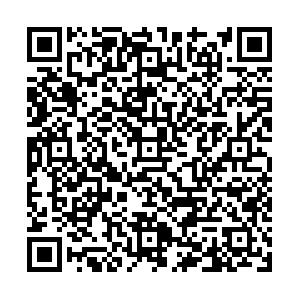Clinical study of the effects of threshold pressure load respiratory muscle training on respiratory function rehabilitation in patients with brain trauma
-
摘要:
目的 观察阈值压力负荷呼吸肌训练对脑外伤患者呼吸功能康复的效果。 方法 选取2018年3月—2019年6月于郑州大学第二附属医院治疗的脑外伤卧床患者60例,采用随机数字表法分为观察组30例、对照组30例。2组均行常规内外科治疗与康复治疗,观察组同时行阈值压力负荷呼吸肌训练,治疗6周。评测治疗前后2组患者的肺功能指标、动脉血气分析、吸气肌功能和肺部感染情况。 结果 观察组治疗6周结束时,其MVV[(85.23±1.21)%]、FEV1[(2.41±0.28)L/s]、FVC[(3.26±0.35)L]、FEV1/FVC[(85.90±2.60)%]、MIP[(87.40±6.82)cm H2O]、PIF[(5.39±0.12) L/s]均较治疗前有明显提高(均P < 0.05), 对照组治疗结束时其MVV、FEV1、FVC、FEV1/FVC、MIP、PIF均较治疗前提高(均P < 0.05),且治疗后观察组比对照组改善更为明显(均P < 0.05);观察组治疗后PaCO2、PaO2分别为[(38.10±1.50) mm Hg和(89.31±1.60) mm Hg]较治疗前[(40.21±1.63) mm Hg和(75.66±1.68) mm Hg]均有明显改善(均P < 0.05);观察组治疗期间肺部感染率(6.7%)较对照组(30.0%)明显下降(P<0.05)。 结论 阈值压力负荷呼吸肌训练能显著改善脑外伤患者的呼吸功能,提高动脉氧分压,并显著降低肺部感染率。 Abstract:Objective The aim of this study was to observe of the effect of threshold pressure load respiratory muscle training on respiratory function rehabilitation in patients with traumatic brain injury. Methods Sixty patients with brain trauma from March 2018 to June 2019 in the Second Affiliated Hospital of Zhengzhou University were included in the study. They were divided into the observation group (30 cases) and the control group (30 cases) according to the random number table method. Both groups underwent routine medical treatment and rehabilitation. The observation group also underwent threshold pressure loaded respiratory muscle training, treatment for 6 weeks. The pulmonary function indexes, arterial blood gas analysis, inspiratory muscle function and pulmonary infection were evaluated before and after treatment between the two groups. Results At the end of 6 weeks of treatment in the observation group, the maximum ventilatory volume [MVV, (85.23±1.21)%], forced expiratory volume in one second [FEV1, (2.41±0.28)L/s], forced vital capacity [FVC, (3.26±0.35)L], one second rate [FEV1/FVC, (85.90±2.60)%], maximum inspiratory pressure [MIP, (87.40±6.82) cm H2O], peak of inspiratory flow[PIF, (5.39±0.12) L/s] were significantly higher than those before the treatment (all P < 0.05), and MVV, FEV1, FVC, FEV1/FVC, MIP, PIF at the end of treatment in the control group were also significantly higher than those before the treatment (all P < 0.05), and the observation group improved more significantly as compared with the control group after the treatment (all P < 0.05). After the treatment, arterial partial pressure of carbon dioxide (PaCO2) and arterial partial pressure of oxygen (PaO2) in the observation group [(38.10±1.50) mm Hg and (89.31±1.60) mm Hg] were significantly improved when compared with those before the treatment [(40.21±1.63) mm Hg and (75.66±1.68) mm Hg], all P < 0.05. The pulmonary infection rate in the observation group (6.7%) was significantly lower than that in the control group (30.0%), P < 0.05. Conclusion Threshold pressure-loaded respiratory muscle training can significantly improve the respiratory function of patients with traumatic brain injury, increase the partial pressure of arterial oxygen, and significantly reduce the rate of pulmonary infection. -
表 1 2组脑外伤患者肺通气功能比较(x±s)
组别 例数 FVC(L) FEV1(L/s) FEV1/FVC(%) MVV(%) 治疗前 治疗后 治疗前 治疗后 治疗前 治疗后 治疗前 治疗后 观察组 30 2.17±0.33 3.26±0.35a 1.83±0.33 2.41±0.28a 62.24±4.31 85.90±2.60a 66.10±1.62 85.23±1.21a 对照组 30 2.24±0.35 2.70±0.31a 1.98±0.35 2.19±0.33a 62.37±4.46 77.51±2.52a 66.23±1.69 75.44±0.96a t值 0.871 -6.398 1.738 -2.760 0.094 -12.667 0.304 -34.691 P值 0.387 < 0.001 0.087 0.008 0.926 < 0.001 0.762 < 0.001 注:与组内治疗前比较,aP<0.05。 表 2 2组脑外伤患者动脉血气结果比较(x±s,mm Hg)
组别 例数 PaO2 PaCO2 治疗前 治疗后 治疗前 治疗后 观察组 30 75.66±1.68 89.31±1.60a 40.21±1.63 38.10±1.50a 对照组 30 76.47±1.74 83.64±1.32a 39.63±1.30 38.88±1.31a t值 1.837 -14.981 -1.526 2.161 P值 0.071 < 0.001 0.132 0.035 注:与组内治疗前比较,aP<0.05;1 mm Hg=0.133 kPa。 表 3 2组脑外伤患者吸气肌功能比较(x±s)
组别 例数 MIP(cm H2O) PIF(L/s) 治疗前 治疗后 治疗前 治疗后 观察组 30 43.78±3.34 87.40±6.82a 2.35±0.08 5.39±0.12a 对照组 30 42.13±3.31 77.23±3.37a 2.37±0.09 4.90±0.07a t值 -1.926 -7.323 0.785 -18.959 P值 0.059 < 0.001 0.436 < 0.001 注:与组内治疗前比较,aP<0.05;1 cm H2O=0.098 kPa。 -
[1] JOHNSON W D, GRISWOLD D P. Traumatic brain injury: A global challenge[J]. Lancet Neurol, 2017, 16(12): 949-950. doi: 10.1016/S1474-4422(17)30362-9 [2] 王小云, 马艳, 周芳, 等. 针刺联合呼吸训练对脑卒中患者肺功能的影响[J]. 中华物理医学与康复杂志, 2015, 37(10): 754-756. https://www.cnki.com.cn/Article/CJFDTOTAL-ZGKF202011015.htm [3] MAAS A I R, MENON D K, ADELSON P D, et al. Traumatic brain injury: Integrated approaches to improve prevention, clinical care, and research[J]. Lancet Neurol, 2017, 16(12): 987-1048. doi: 10.1016/S1474-4422(17)30371-X [4] 谭高小, 莫素莹, 卢雪云. 呼吸训练预防脑卒中康复早期卧床患者肺部感染的效果[J]. 中国实用医药, 2019, 14(18): 132-134. https://www.cnki.com.cn/Article/CJFDTOTAL-ZSSA201918074.htm [5] 马艳, 王小云, 岳翔, 等. 膈肌训练对脑卒中后疲劳患者日常生活活动的影响[J]. 中华物理医学与康复杂志, 2016, 38(8): 587-590. doi: 10.3760/cma.j.issn.0254-1424.2016.08.007 [6] MENEZES K K, NASCIMENTO L R, ADA L, et al. Respiratory muscle training increases respiratory muscle strength and reduces respiratory complications after stroke: A systematic review[J]. J Physiother, 2016, 62(3): 138-144. doi: 10.1016/j.jphys.2016.05.014 [7] JUNG K M, BANG D H. Effect of inspiratory muscle training on respiratory capacity and walking ability with subacute stroke patients: A randomized controlled pilot trial[J]. J Phys Ther Sci, 2017, 29(2): 336-339. doi: 10.1589/jpts.29.336 [8] KULNIK S T, BIRRING S S, MOXHAM J, et al. Does respiratory muscle training improve cough flow in acute stroke? Pilot randomized controlled trial[J]. Stroke, 2015, 46(2): 447-453. doi: 10.1161/STROKEAHA.114.007110 [9] SEO K, HWAN P S, PARK K. The effects of inspiratory diaphragm breathing exercise and expiratory pursed-lip breathing exercise on chronic stroke patients' respiratory muscle activation[J]. J Phys T-her Sci, 2017, 29(3) : 465-469. doi: 10.1589/jpts.29.465 [10] O'PHELAN K H, MERENDA A, DENNY K G, et al. Therapeutic temperature modulation is associated with pulmonary complications in patients with severe traumatic brain injury[J]. World J Crit Care Med, 2015, 4(4): 296-301. doi: 10.5492/wjccm.v4.i4.296 [11] 邓磊, 李依, 冯璇璘, 等. PCT和CRP在重症颅脑外伤合并呼吸机相关性肺炎中的诊断价值[J]. 中华医院感染学杂志, 2020, 30(11): 1713-1717. https://www.cnki.com.cn/Article/CJFDTOTAL-ZHYY202011024.htm [12] 林丽霞, 李碧双. 不同吸痰方法对重型颅脑损伤患者气管切开早期肺通气功能及肺部感染的影响[J]. 中外医疗, 2017, 36(30): 18-20. https://www.cnki.com.cn/Article/CJFDTOTAL-HZZZ201730005.htm [13] 王晓丹, 王慧灵, 刘承梅, 等. 改良的经络呼吸训练法对脑卒中急性期患者肺功能的影响[J]. 中华物理医学与康复杂志, 2018, 40(11): 826-829. doi: 10.3760/cma.j.issn.0254-1424.2018.11.005 [14] BEAUMONT M, FORGET P, COUTURAUD F, et al. Effects of inspiratory muscle training in COPD patients: A systematic review and meta-analysis[J]. Clin Respir J, 2018, 12(7): 2178-2188. doi: 10.1111/crj.12905 [15] 杨涛, 欧阳斐, 赵焱, 等. 呼吸康复训练治疗出血性脑卒中相关性肺炎的疗效观察[J]. 中华物理医学与康复杂志, 2019, 41(3): 210-212. doi: 10.3760/cma.j.issn.0254-1424.2019.03.011 [16] POSTMA K, VLEMMIX L Y, HAISMA J A, et al. Longitudinal association between respiratory muscle strength and cough capacity in persons with spinal cord injury: An explorative analysis of data from a randomized controlled trial[J]. J Rehabil Med, 2015, 47(8): 722-726. doi: 10.2340/16501977-1986 [17] MEDEIROS A I C, BRANDÃO D C, SOUZA R J P, et al. Effects of daily inspiratory muscle training on respiratory muscle strength and chest wall regional volumes in haemodialysis patients: A randomised clinical trial[J]. Disabil Rehabil, 2019, 41(26): 3173-3180. doi: 10.1080/09638288.2018.1485181 [18] 俞长君, 杨婷, 张会慧, 等. 不同呼吸训练方式对亚急性期脑卒中呼吸功能及膈肌功能的影响[J]. 广西医学, 2019, 41(1): 102-104, 107. https://www.cnki.com.cn/Article/CJFDTOTAL-GYYX201901026.htm -

 点击查看大图
点击查看大图
计量
- 文章访问数: 562
- HTML全文浏览量: 260
- PDF下载量: 7
- 被引次数: 0



 下载:
下载: 